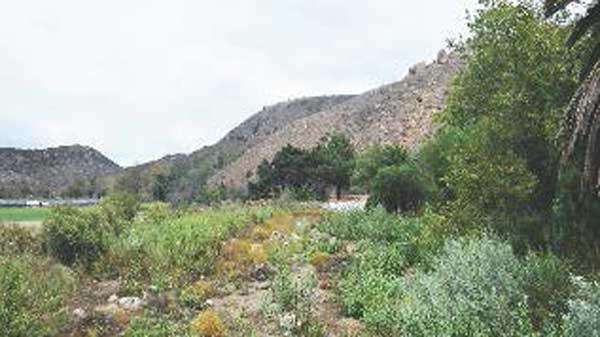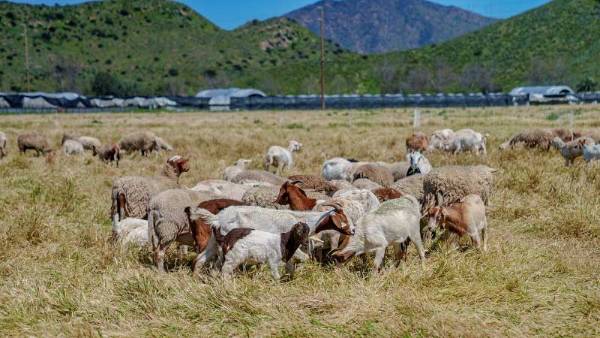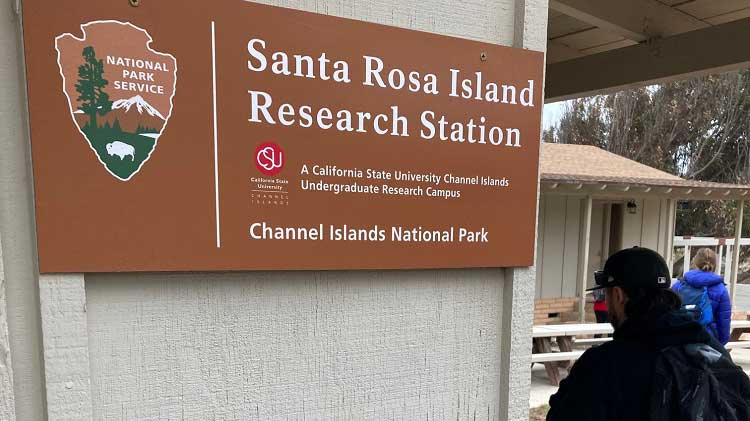What is “Environmental Resilience”?
Environmental resilience is the capacity of an ecosystem to respond to disturbances by resisting damage, recovering quickly, and reorganizing while undergoing change to eventually retain the same function, structure, identity, and feedbacks. In order to build and maintain an environmentally-resilient campus, we must manage resources and the community in a way that will not degrade the CI environment any further. Building resilience means making sure we are a part of making our campus less vulnerable to climate change and other anthropogenic environmental stressors.
Habitat Restoration
To mitigate the environmental impact of campus growth, CI has engaged in habitat restoration projects to support the native plant and animal species.

Upon completion of constructing University Drive, the university completed a restoration project for five acres within the lower portions of Long Grade Creek. The project focused on developing a native riparian habitat to support nesting birds, including the endangered Least Bell’s Vireo. Further to the west near Old Lewis Road, a basin was formed by a new flood control levee, which allows for an extension of the wetland and pond habitat in the area. This area is heavily populated by waterfowl and red wing blackbirds.
Vegetation Management Techniques

CI is responsible for nearly 1,200 acres of land, some of which will remain undeveloped and managed as naturally as possible. Located directly adjacent to a high fire risk zone, it is imperative that the natural vegetation is routinely managed to reduce fuel and mitigate risk of catastrophic fire. The university often contracts with CalFire hand crews to do much of the annual fire clearing. In recent years, the university has also started experimenting with other vegetation management strategies, such as targeted grazing. CI welcomed a herd of goats and sheep to campus in the spring of 2023 to clear noxious weeds in the area surrounding the play fields on University Drive. The goats and sheep went to work for several weeks, slowly eating their way through the star thistle and tumbleweeds, reducing the university’s need to fire up fossil-fueled equipment to cut back the vegetation.
Dark Sky Standard
One way to support the diverse wildlife on campus is to minimize light pollution. To do this, all outdoor lighting shall implement the “dark sky friendly” lighting design specifications by the International Dark-Sky Association to protect the nighttime environment from light pollution including sky glow, glare, light trespass, light clutter, decreased visibility, and energy waste. The lighting in the South Quad was the first phase for changing out the inefficient fixtures with the new fixtures minimizing light pollution and using approximately 1/4 of the energy.
Native Species
Native plants are an important part of preserving our natural and cultural resources. Southern California native vegetation also helps combat water use because they do not require heavy irrigation like other ornamental plants. CSUCI’s landscaping team is methodically working to replace water-intensive turf with drought-tolerant native plants and rock gardens, increasing biodiversity and bolstering resilience to drought.
Santa Rosa Island Research Station (SRIRS)

SRIRS is a CI run facility that is located on Santa Rosa Island, part of the Channel Islands National Park. The facility is catered for CI students to conduct undergraduate research on subjects that include, but are not limited to:
- Climate change impacts and implications for management
- Native and invasive species interactions
- Restoration of a variety of different plant communities
- Protection and management of mammal species of concern such as the Island Fox and Spotted Skunk
- Lasting impact of erosion from ranching
- Cloud forests
- Energy and infrastructure management
- Plastic pollution and microplastics
This research is conducted by students, staff, and faculty partnered with the National Park Service to provide sound science for the park and the mainland nearby.
